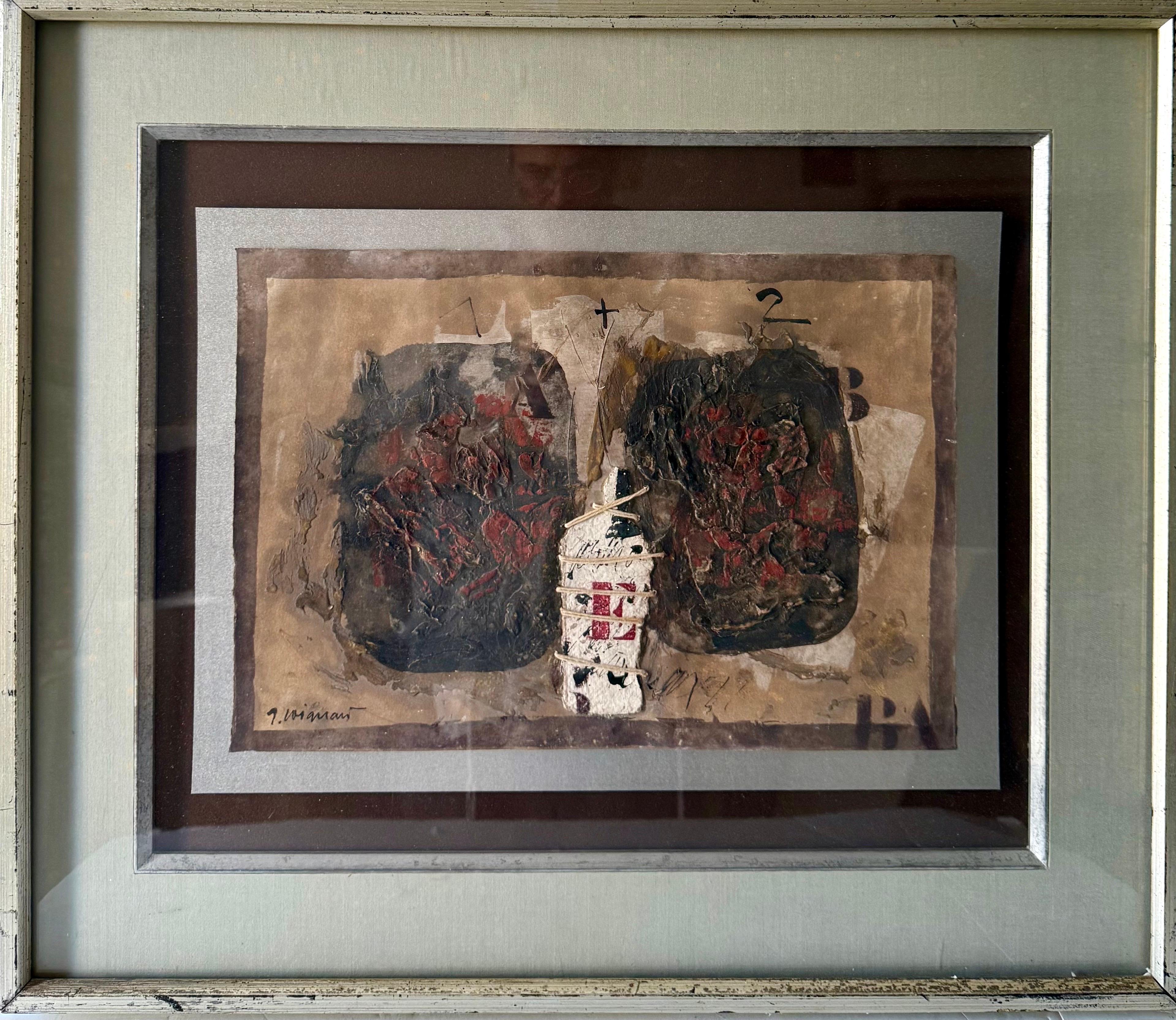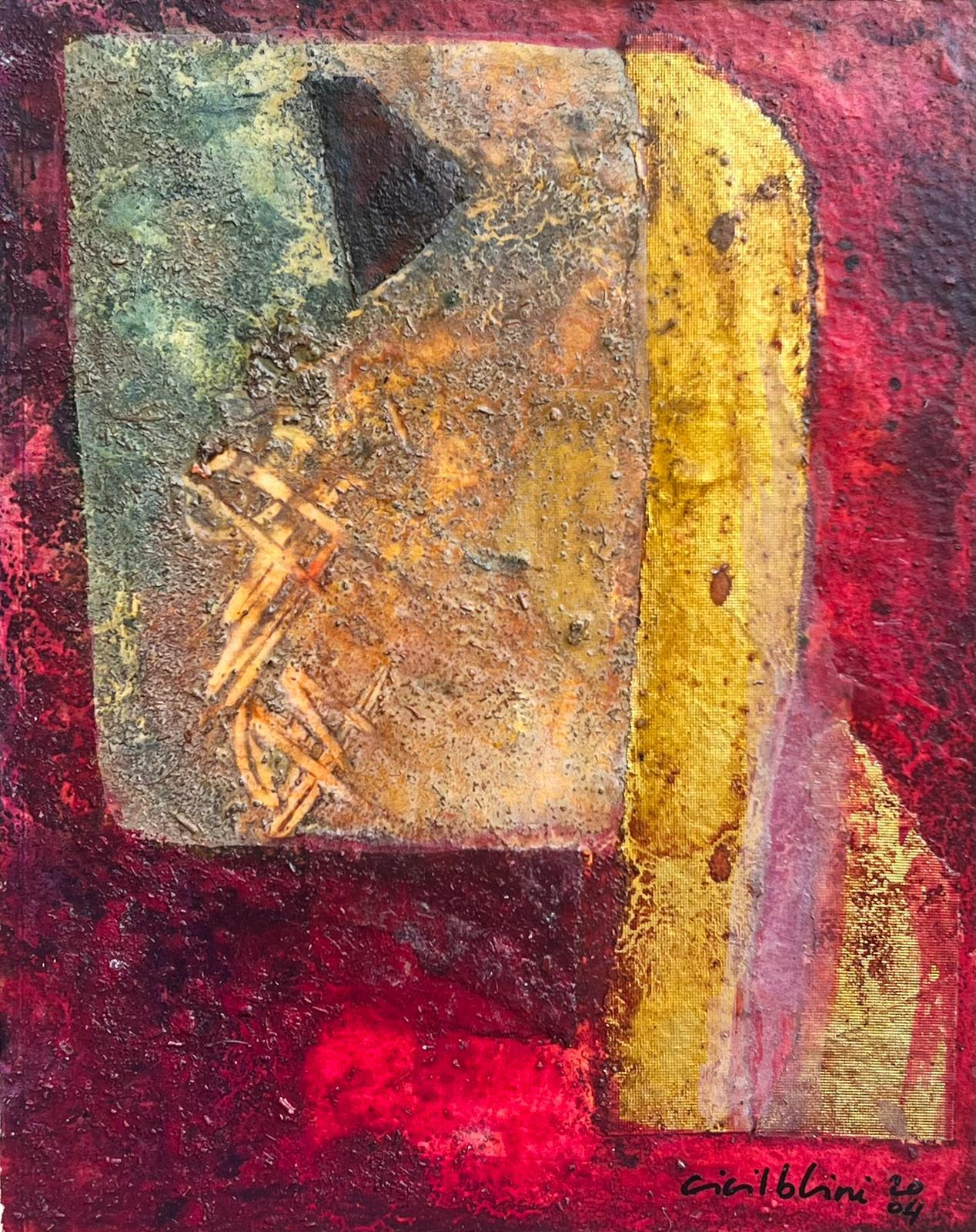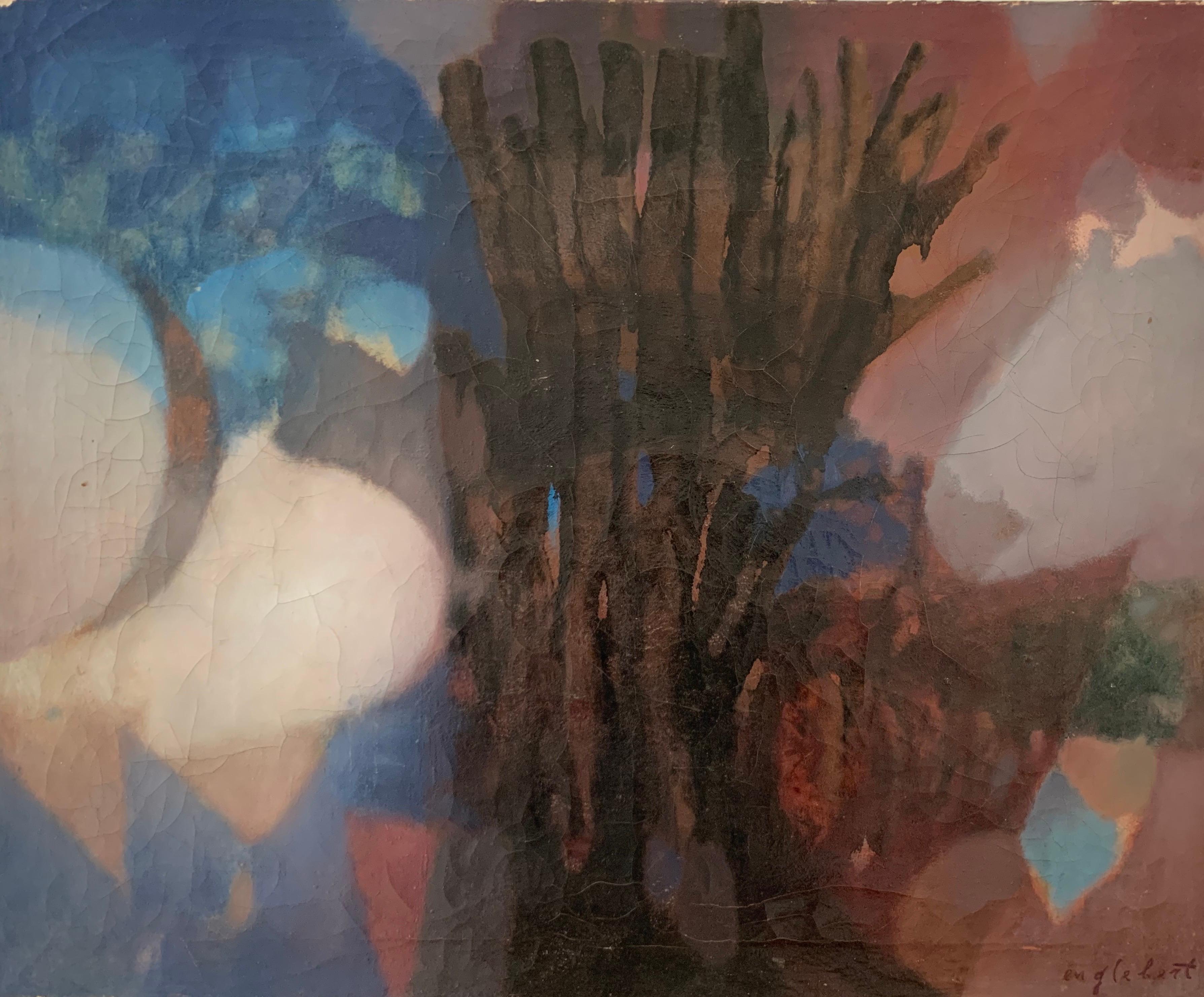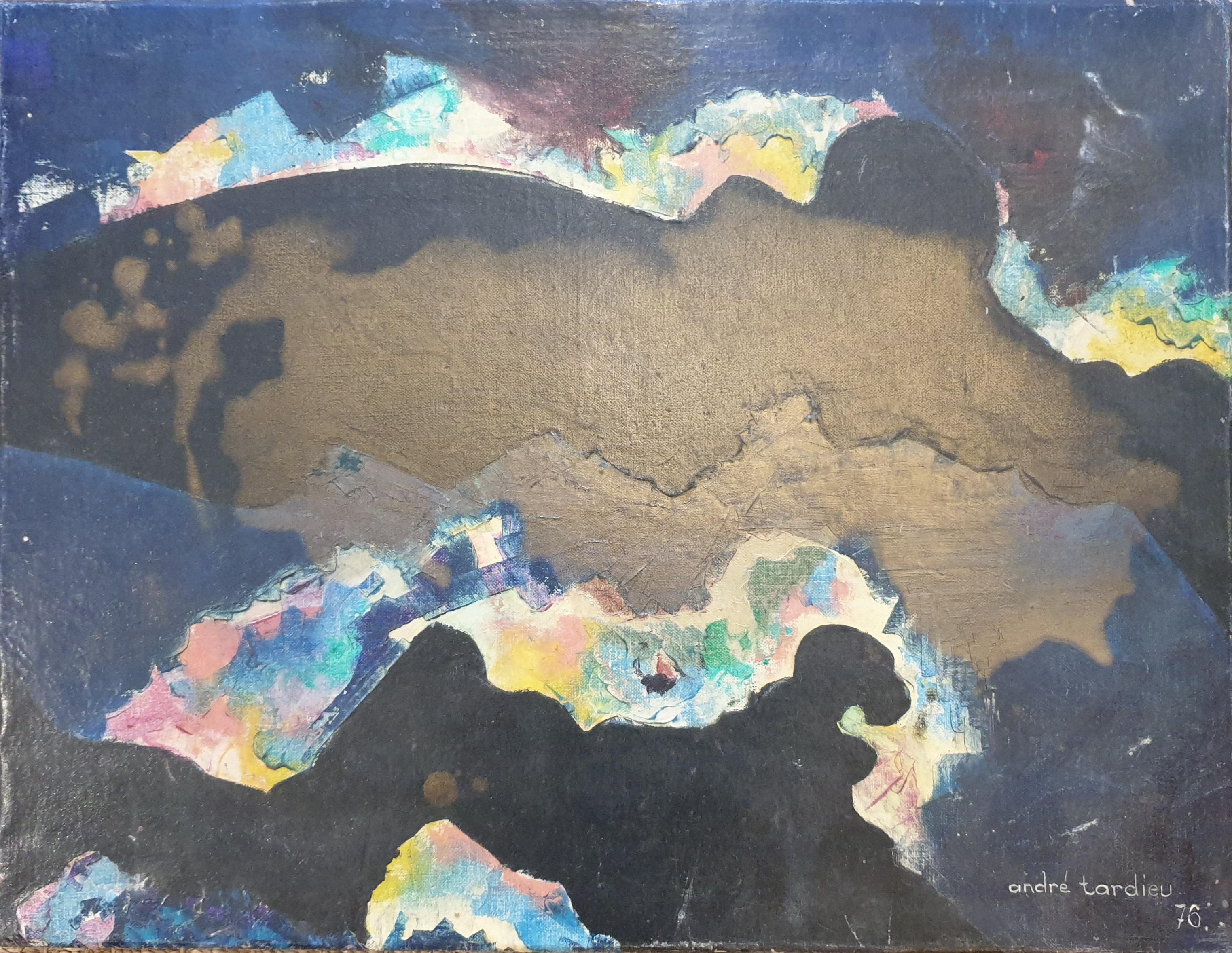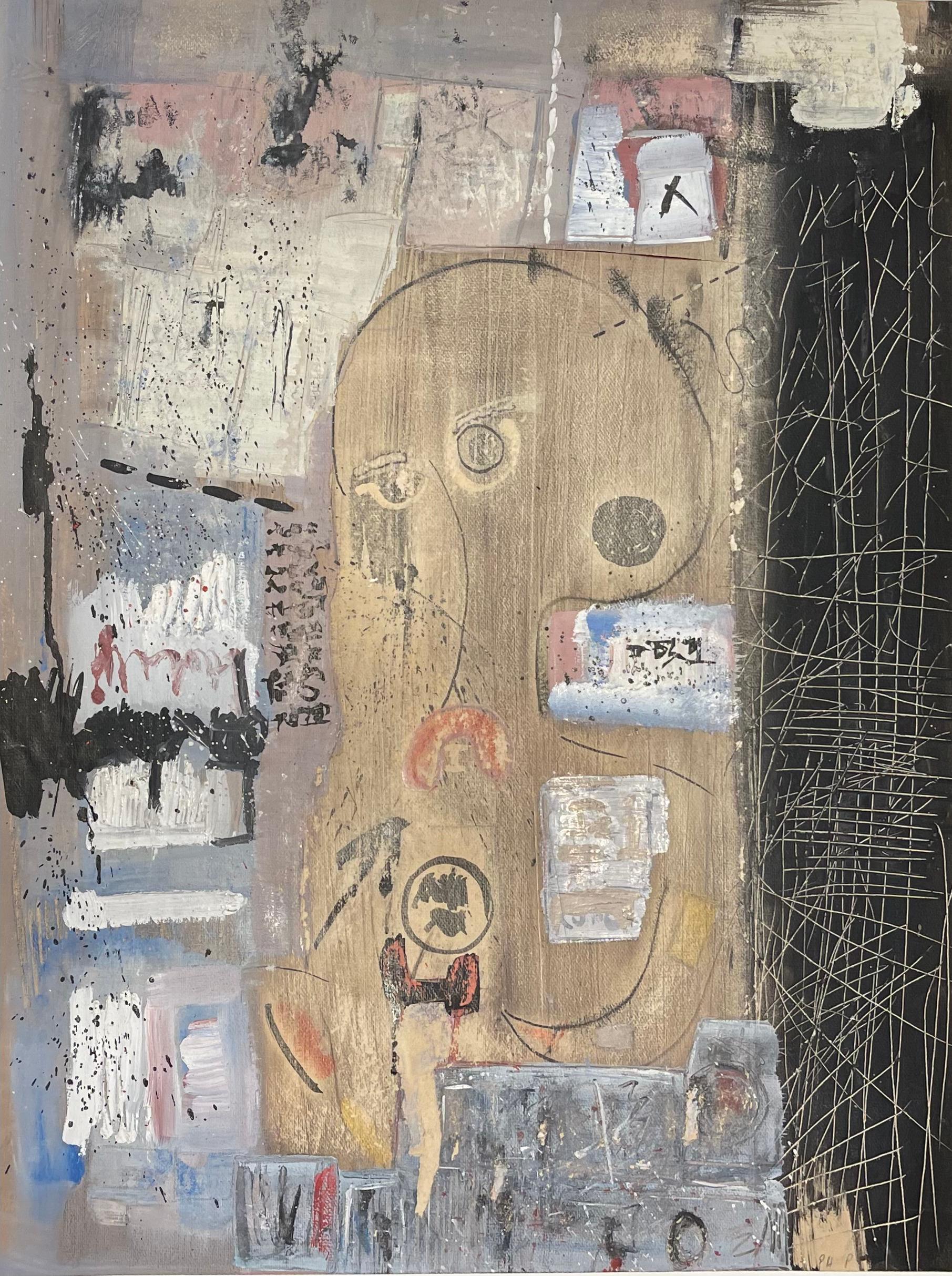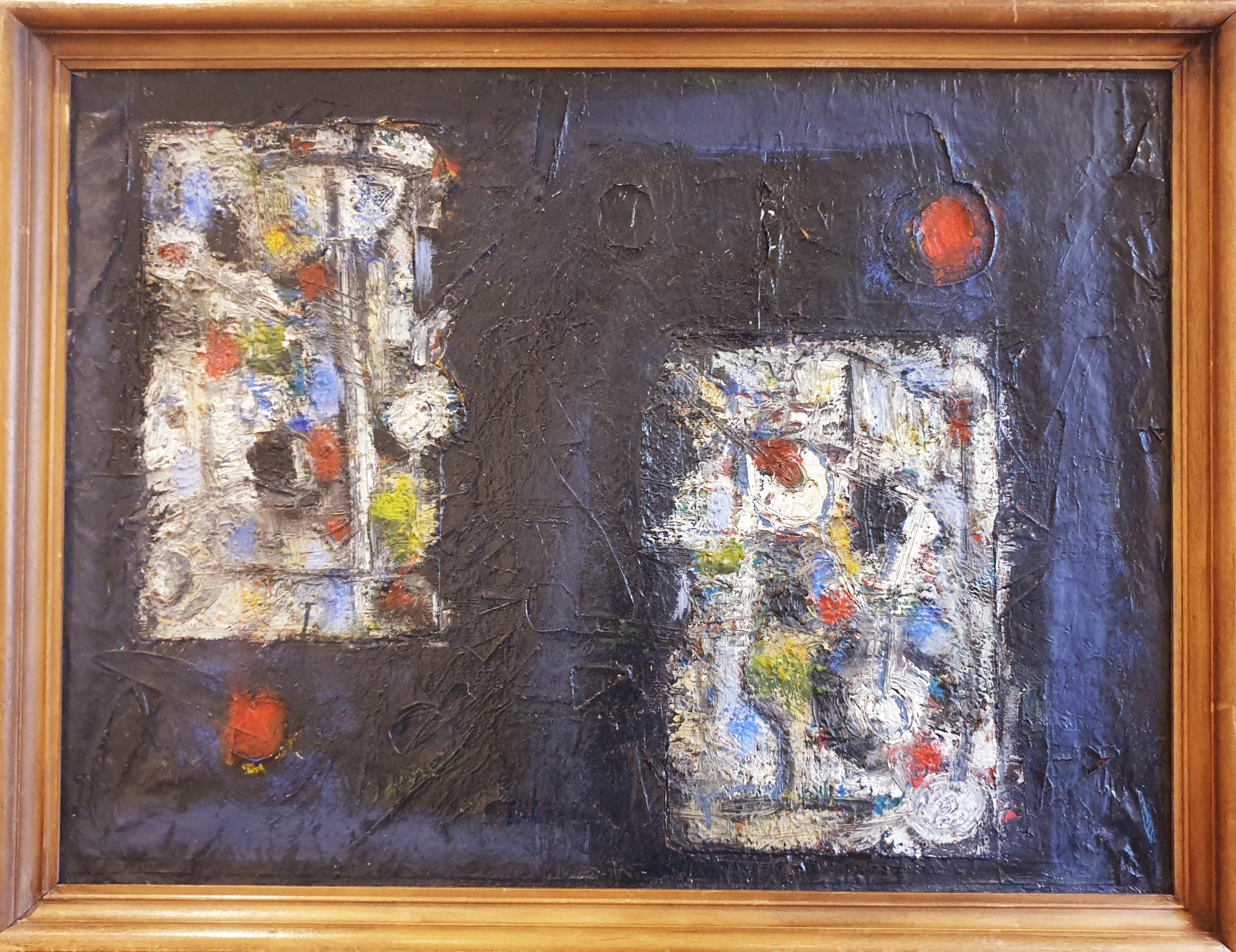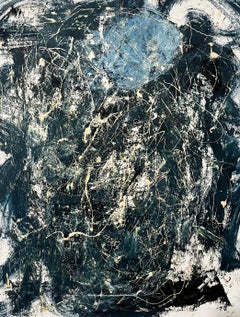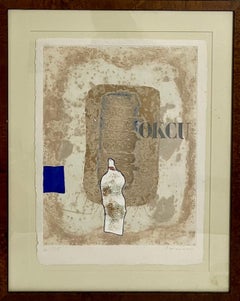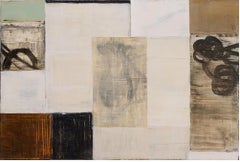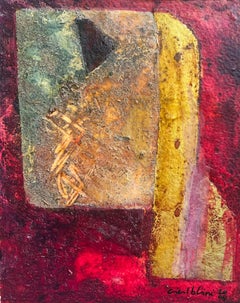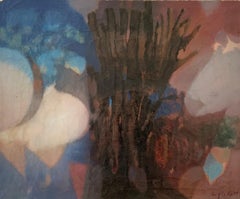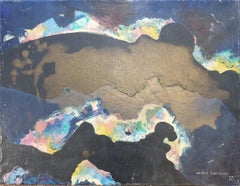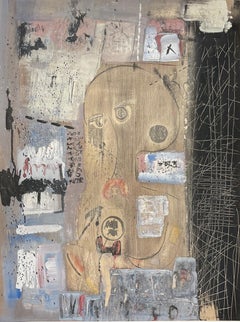Items Similar to French Pop Art Modernist Textured Painting Abstract With Stencilled Letters
Want more images or videos?
Request additional images or videos from the seller
1 of 12
UnknownFrench Pop Art Modernist Textured Painting Abstract With Stencilled Lettersc.1980
c.1980
$2,000
£1,524.32
€1,742.40
CA$2,813.87
A$3,082.51
CHF 1,622.51
MX$36,790.58
NOK 20,682.95
SEK 18,907.33
DKK 13,015.40
About the Item
This is a large mixed media abstract painting with stencilled letters in a sans serif typeface in blue and red.
it is in the manner of James Coignard but does not appear to be signed. it might have been pat of a diptych.
James Coignard was born in Tours, France in 1925. At the age of three he moved to Paris with his parents. As a child he had an insatiable appetite for drawing and painting. In 1948, at 23 years of age, he made up his mind to become an artist and enrolled at the Ecole des arts Décoratifs in Nice. He apprenticed under the well-known painter Marchand des Raux. The following year the two of them staged a joint exhibition at the Musa de L’ile de France in St. Jean Cap Ferrat. Around the same time Coignard came into contact with the great Henri Matisse and was influenced by his work but soon began to seek his own ways forward. Not long afterwards, Coignard discovered the modernist™ handling of color via the techniques of Georges Braque and Marc Chagall. In both his mixed media on canvas and his works on paper, James Coignard is known for his technical versatility and use of vibrant primary colors. Coignard achieves a deep, heavy texture which is distinctive trait in his art.
With just a few strokes of his brush he conjures up an entire world. James Coignard extends the boundaries between concrete and abstract. He knows how to create chromatic melodies that shift in timbre from cobalt blue to blood red, from earthy tones to blocks of color as black as night. His paintings embrace everything from vast expanses of color to spaces enclosed. His pictures are an artistic epicenter where lines, letters and numbers mold with vigorous swashes of color. His paintings and graphic works are an artistic adventure, an aesthetic game in which the destructive and the momentous mingle freely with the spontaneous and the sensual.
His contact in the late 1950s with a number of Spanish artists and his special fascination for Catalan sculptures and frescoes proved decisive for his artistic development. In the 1960’s he began to create sculptures in bronze and glass, which he has continued to produce parallel with his paintings and graphic work. In the late 1960s Coignard produced his first etchings in the gravure au carborundum technique. The carborundum process of printmaking was developed by Henri Goetz in the 1960’s. It was Goetz himself that taught Coignard and other artists the use of carborundum for printmaking.
Since his first solo exhibition in Paris in 1960, Coignard has exhibited in major galleries and museums throughout the world, and is well represented in both private and public collections that include the Guggenheim Museum in New York and the Museum of Modern Art in San Francisco, California. He is represented by the Paule Friedland & Alexandre Rivault Gallery in Paris and edited by the Pasnic print house in Paris. James Coignard’s principal modes of expression were oil on canvas and gravure au carborundum, but also in bronze and glass sculptures as well as in ceramics. His work has been shown on more than 400 exhibitions, primarily in Central Europe and Scandinavia, but also in Canada and the USA. His first Swedish exhibition was at Malmö Museum in 1956. The early 1970s saw the start of a long-term liaison with Galleri Östermalm in Stockholm, owned by Editions Sonet. They came to represent him in Scandinavia and edited several volumes of his graphic works.
- Creation Year:c.1980
- Dimensions:Height: 15.75 in (40 cm)Width: 11.82 in (30 cm)
- Medium:
- Movement & Style:
- Period:
- Condition:good. minor wear.
- Gallery Location:Surfside, FL
- Reference Number:1stDibs: LU38214212532
About the Seller
4.9
Platinum Seller
Premium sellers with a 4.7+ rating and 24-hour response times
Established in 1995
1stDibs seller since 2014
1,846 sales on 1stDibs
Typical response time: 1 hour
- ShippingRetrieving quote...Shipping from: Surfside, FL
- Return Policy
More From This Seller
View AllFrench Pop Art Modernist Textured Painting Abstract With Stencilled Letters
By James Coignard
Located in Surfside, FL
This is a mixed media abstract painting collage with string, plaster texture, stencilled letters in a bold typeface. Size includes frame.
James Coignard was born in Tours, France in...
Category
20th Century Post-War Abstract Paintings
Materials
Jute, Mixed Media, Oil, Board
Bold Graphic Abstract Expressionist Mixed Media Painting Richard Snyder NYC Art
Located in Surfside, FL
Richard Snyder (American, born 1951)
Untitled
Mixed media painting including oil
Hand signed to lower right on the back
Dimensions: 22.5" W x 30.0" H x 0.1" D
Richard Snyder is particularly known for his large-scale abstract expressionist paintings exhibiting vibrant colors, often applied in an irregular manner with large gestural brushstrokes. He also was an accomplished sculptor and was amongst the downtown New York art-furniture scene spawned in the 1980s by the Soho gallery ‘Art et Industrie’ founded by Rick Kaufmann. Downtown New York, circa 1977-1980 was a hothouse of creative impulses that flew in the face of restrictions and ran headlong toward riotous expression. Punk, hip-hop, graffiti or neo-expressionism,
Kaufmann looked around for new talent that could create a new kind of art furniture. He felt the design of the day was so standardised, and he wanted to give voice to young artists and bring new ideas to market.
After receiving a BFA from the School of the Museum of Fine Arts in Boston, Snyder made his career in the fields of art and design, practicing sculpture, painting, furniture design and fabrication, interior design, cabinetmaking, construction and industrial design. Along with extensive experience in a wide variety of materials and processes, Snyder also possesses a wide range of visual and experiential vocabulary acquired in his many travels through the Americas, Africa, the Middle East and Central and Southeast Asia. Snyder considers his objects to be not just about form, function, color, material and process, but rather to be fantasies with spirit, magic and story. During his seventeen years with the Art et Industrie gallery, Snyder participated in five solo shows and more than twenty group shows, which established him as a major player in the American Art Furniture movement. His pieces have appeared in numerous publications and media around the world; and they are included in numerous private collections worldwide as well as in the permanent collection of The Art Institute of Chicago. Snyder guest-lectures at the Rhode Island School of Design in Providence, the New School in New York, and SUNY Purchase.
He was included in the seminal Magen H Gallery retrospective of Art et Industrie—a New York Movement. Art et Industrie was the first to exhibit Studio Alchemia, Shiro Takahama, and Ron Arad.
The retrospective included artists such as Forrest Myers, Terence Main...
Category
20th Century Abstract Expressionist Abstract Paintings
Materials
Oil
French Pop Art Modernist Textured Carborundum Etching Abstract James Coignard
By James Coignard
Located in Surfside, FL
Carborundum Etching by James Coignard (French, 1925-2008)
Signed and numbered 5/15. This might be a proof edition
Includes insert by Michel Bohbot
Frame: 22.5" X 18"
Image: 16.75" X ...
Category
20th Century Abstract Expressionist Abstract Prints
Materials
Mixed Media, Etching
German American Neo Abstract Expressionist Contemporary Oil Painting Mixed Media
By Bernd Haussmann
Located in Surfside, FL
Berndt Haussmann (German / American, b. 1957)
Das Lied von der Erde,
mixed media painting on canvas
signed, titled and numbered on verso
unframed
32 1/4 x 48 inches.
BERND HAUSSMAN...
Category
Early 2000s Neo-Expressionist Abstract Paintings
Materials
Mixed Media, Oil
American Modernist Abstract Expressionist Oil Painting Carving William Pellicone
Located in Surfside, FL
William Pellicone (American 1915-2004)
Mixed media, pyrography, oil on wood carving painting. Dated 1958
Title - Enthymeme #14.
Oil painting on carved and burnt distressed wood panel.
Inscribed verso Enthymeme Wm. Pellicone #14, 9-4-58.
Label on reverse with a typed definition for Enthymeme.
Dimensions: 27 inches high, 42.5 inches wide.
Metal wrap frame.
Provenance: from a Shelter Island NY home that was designed by architect Henry J. Gazon - A.I.A. built in 1959.
William Pellicone (1915-2004) was an American painter known for his abstract compositions and use of vibrant colors. He was born in New York City and studied at the Art Students League and the Brooklyn Museum Art School. Pellicone's early work was influenced by the Social Realist movement of the 1930s and 1940s, with his paintings often featuring realistic depictions of urban scenes and working-class people. However, in the 1950s he shifted towards abstraction, exploring the interplay of color and form. Pellicone's mature style was characterized by his use of vibrant, saturated colors, often applied in thick layers of paint. His paintings often featured geometric shapes and organic forms, with a strong sense of movement and energy. In addition to his painting, Pellicone was also a respected teacher and arts administrator. He taught at the New York Institute of Technology and the State University of New York, and served as the director of the Islip Art Museum on Long Island. Pellicone's artwork was exhibited widely during his lifetime, and he was the recipient of numerous awards and honors, including a National Endowment for the Arts grant in 1977. Today, his paintings can be found in the collections of museums and galleries around the world, including the Smithsonian American Art Museum in Washington, D.C. and the Metropolitan Museum of Art in New York.
William Pellicone (Born 1915) is active/lives in New York. William Pellicone is known for Abstract expressionist, landscape and non-objective art. An American artist, sculptor, architect. He exhibited at Pennsylvania Academy Fine Arts...
Category
1950s Abstract Expressionist Abstract Paintings
Materials
Wood, Oil
Modernist American Abstract Expressionist Pop Art Painting on Canvas James Yohe
By James Yohe
Located in Surfside, FL
James Yohe
A Quiet Situation-Move
Acrylic on canvas, 1980,
Hand signed 'Yohe', titled and dated on the reverse, with label from Alexander Milliken Gallery NY.
18 1/2 x 20 1/2 in., t...
Category
1980s Post-Modern Abstract Paintings
Materials
Canvas, Acrylic
You May Also Like
Contemporary French Abstract Painting Signed Original Work
Located in Cirencester, Gloucestershire
French contemporary artist,
signed & inscribed verso
oil painting on board, unframed
board: 7 x 6 inches
provenance: private collection, France
condition: very good and sound condit...
Category
2010s Abstract Abstract Paintings
Materials
Oil
1960's French Modernist Signed Oil Painting Fusion of Colors & Shapes
Located in Cirencester, Gloucestershire
"L 'arbre Mort"
French School, circa 1960's
signed lower corner, titled verso
oil painting on canvas, framed
canvas: 23.5 x 29 inches
framed: 26 x 31
Wonderful fusion of colors blur...
Category
Mid-20th Century Modern Abstract Paintings
Materials
Canvas, Oil
Mid-century Abstract Expressionist Oil on Canvas.
Located in Cotignac, FR
Mid-century abstract expressionist oil on canvas by French artist, André Tardieu, signed and dated 1976 bottom right. Also with signature, ...
Category
Mid-20th Century Abstract Expressionist Abstract Paintings
Materials
Canvas, Oil
French Contemporary Art by Philippe Pélissier - Shoah
Located in Paris, IDF
Gouache, Indian ink & collages on paper
Philippe Pélissier is a French artist born in 1947 who lives and works in Paris, France. He was figure skating coach and former competitor. H...
Category
2010s Contemporary Abstract Paintings
Materials
Paper, Ink, India Ink, Gouache
'Monogrammes'. French Mid-Century Abstract Expressionist. Oil on Canvas.
Located in Cotignac, FR
A mid-century abstract expressionist oil on canvas presented in a plain wooden frame. The work is titled and there are initials 'G.O.' (artist?) on a label to the rear stretcher as w...
Category
Mid-20th Century Contemporary Abstract Paintings
Materials
Canvas, Oil
1980s Abstract "Wild" Collage and Painting on Wood
Located in Arp, TX
Rubio
"Wild"
1989
Collage and paint on board
23x41.75"
Signed and dated in paint on reverse
Very Good Condition - Minor wear consistent with age and history
Category
1980s Abstract Abstract Paintings
Materials
Fabric, Wood, Oil
$1,080 Sale Price
40% Off
More Ways To Browse
French Pop Art
Abstract Swedish Oil Painting 1960s
Cap Ferrat
Joe Kardonne
Large Graffiti Painting
Lola Gray Paintings
Malevich Paintings
Morris Lewis
Oil Painting Abstract People
Santa Ynez
Spin Painting Damien Hirst
Tonal Oil Paintings
Abstract String Art
Arabic Painting
Armen Art
Eugene Leroy
French Artist Christophe
Larry Gray Painting
